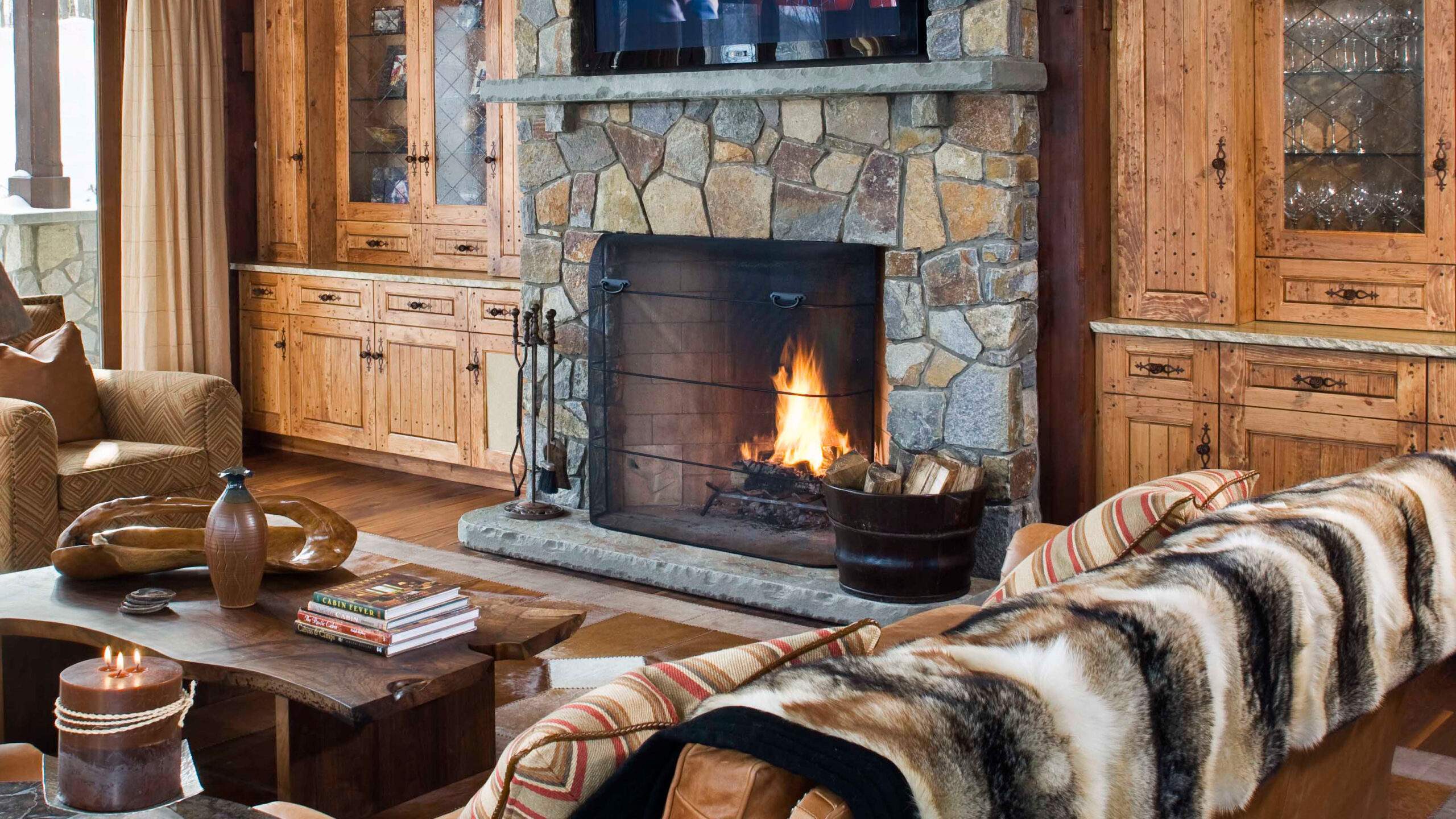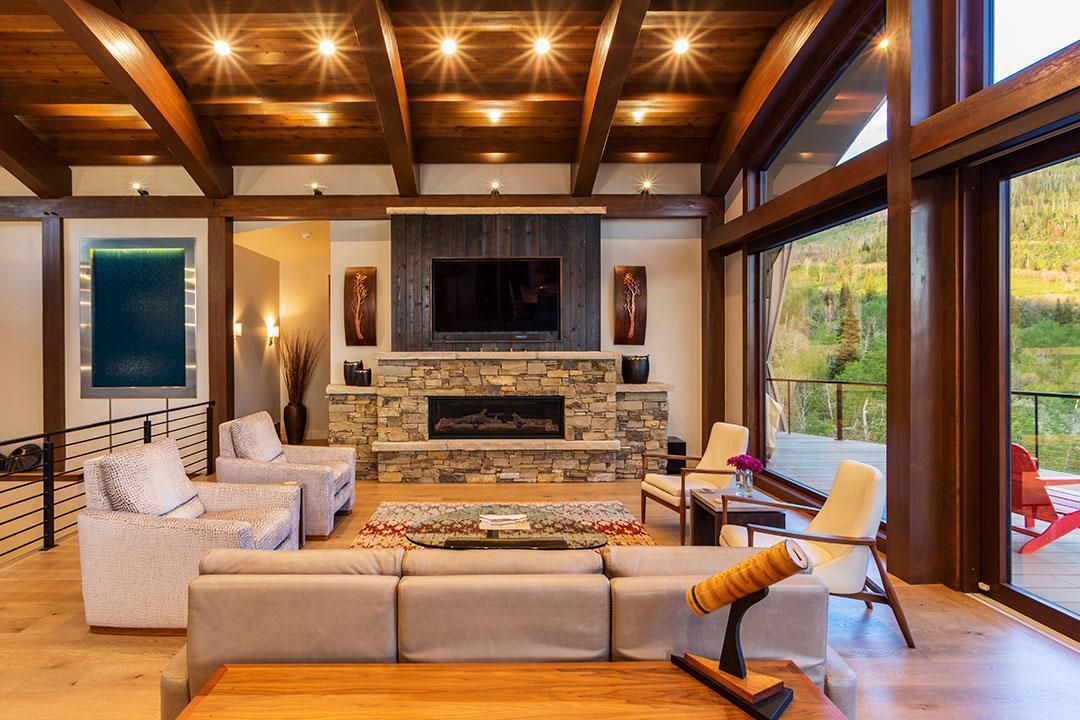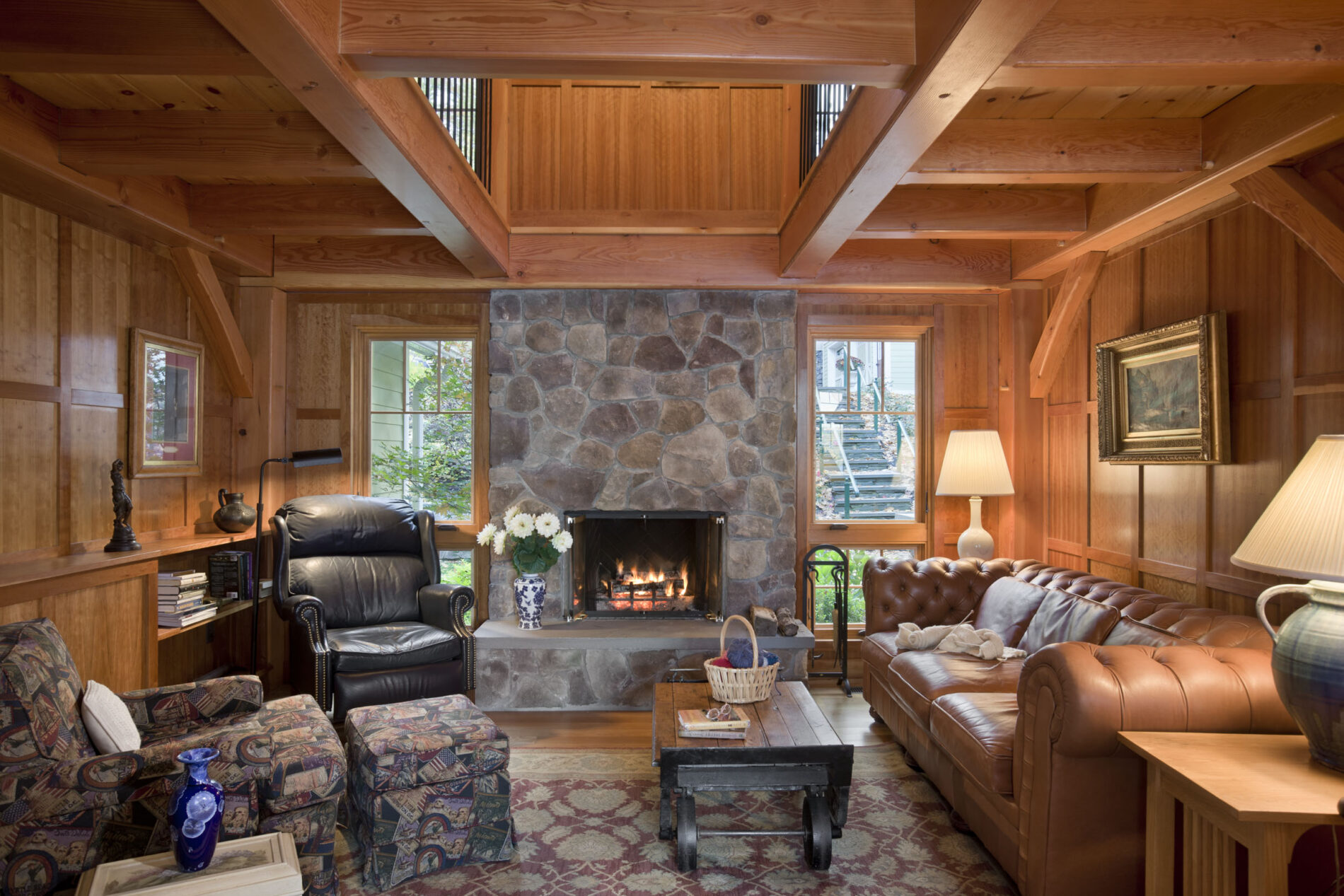How to choose the fireplace that’s perfect for your Woodhouse timber-framed home.
Timber-framed homes and fireplaces are a quintessential duo, fusing beauty and function. In addition to providing heat and elevating overall aesthetics, fireplaces also boost a home’s value. Redfin reports that homes with fireplaces sell for about 13 percent more on average.
Among the different types of fireplaces, zero-clearance and masonry are two popular choices. Most consumers are familiar with iconic masonry fireplaces, but may not realize a zero-clearance fireplace can offer all the same cozy, wood-burning benefits at a much lower cost. Here’s what to know about these two fireplace styles.
What is a Masonry Fireplace?
Masonry fireplaces are custom-built on the property with fire-safe materials (such as brick or stone) and have a firebox, smoke chamber, and chimney. With their stunning masonry, these fireplaces conjure visions of grand lodges and classic, cozy homesteads.
What is a Zero-Clearance Fireplace?
A zero-clearance fireplace is a prefabricated unit that is completely self-contained and insulated. It’s engineered to keep the outside of the fireplace from getting too hot. Like a masonry fireplace, zero-clearance fireplaces can also be wood-burning. While a zero-clearance fireplace does not necessarily require a chimney, you can absolutely still install one and achieve that iconic look of a stately hearth.
Zero-Clearance vs. Masonry Fireplace: Six Considerations
Many variables impact a homeowner’s decision on their fireplace. Placement, personal preference, and budget are the more obvious factors, but environmental concerns and even locale can play an influential role.
1. Aesthetics
It’s the vision of timber-frame dreams: a fireplace surrounded by a wall of stone, all framed by gorgeous, dignified posts and beams. Both masonry and a zero-clearance fireplaces can achieve this coveted look.
Additionally a zero-clearance fireplace provides the opportunity for a minimal aesthetic if that’s something you’re interested in, which is popular in many modern timber-framed homes. Manufacturers are also getting creative with gas flames, swapping out faux logs for glass fire beads or having flames that move to music.
2. Installation Requirements
As the name implies, a masonry fireplace is handcrafted with mortar using fireproof materials in the firebox and heat-resistant building materials for the surrounding structure. Think natural or cultured stone, brick, concrete, or even decorative tiles. This design adds considerable weight, and masonry fireplaces require significant structural support along with a fireproof chimney and specific clearances from combustible materials.
Because a zero-clearance fireplace is a self-contained unit, it can be safely installed directly next to combustible materials, or in the case of timber-framed homes, adjacent to structural insulated panels (SIPs).
3. Are There Cost Differences?
A zero-clearance fireplace with a stone veneer is often about one-third the cost of a full masonry fireplace, a significant price differential.
4. Placement Flexibility
When designing a new build, both masonry and zero-clearance fireplaces are easily incorporated into the floor plan.
5. Energy Efficiency
Zero-clearance fireplaces have superior energy efficiency over their masonry counterparts because they are better sealed and are designed to retain and project heat into the room. Masonry fireplaces lose heat in the chimney. When the flue is left open, it becomes an entryway for chilly air to invade the home. Because zero-clearance fireplaces burn fuel more efficiently, they require less of it.
6. Environmental Impact
Both masonry and zero-clearance fireplaces can be wood-burning, which releases smoke and particulate matter into the atmosphere, contributing to air pollution. The collective impact is significant enough that many ski towns have restrictions on the types and use of wood-burning fireplaces. (However, EPA-certified stove and insert options do exist, as a wood-burning alternative.) It’s a good idea to factor your region’s regulations into your fireplace decision.
Glowing With Style
Woodhouse has extensive experience designing homes that feature masonry and zero-clearance fireplaces. Here are two to explore:
Polished Warmth
Heat meets high design inside this custom modern timber frame in Steamboat Springs, Colorado, with a zero-clearance fireplace. Steamboat’s rugged locale is reflected in the stonework accentuated with a rough-edged mantel and hearth. Above, dark wood surrounds a flat-screen TV, showing off the flexibility that comes with its zero-clearance fireplace.
Fireside Haven
With the chimney beautifully integrated into the exterior, as in this Finger Lakes, New York, timber frame, the promise of a cozy hearth begins before you even enter the home. The chimney’s stone is carried into the home’s entry columns and front porch detail. The union of timber and stone enhances the trusses’ beauty and artistry.
Light It Up
Fuel your fireplace ideas with our online gallery, where you can see the many different ways to incorporate a fireplace into a timber frame design. Got a question or an idea? Connect with your local Woodhouse representative or regional project manager. We build across the U.S., so start by selecting your state.
Meet the Experts
Pat Seaman contributed to this post. Pat is the owner and CEO of Woodhouse, The Timber Frame Company. He has personally built seven timber frame homes and has been involved in many hundreds of timber frame projects over the last 22 years.








